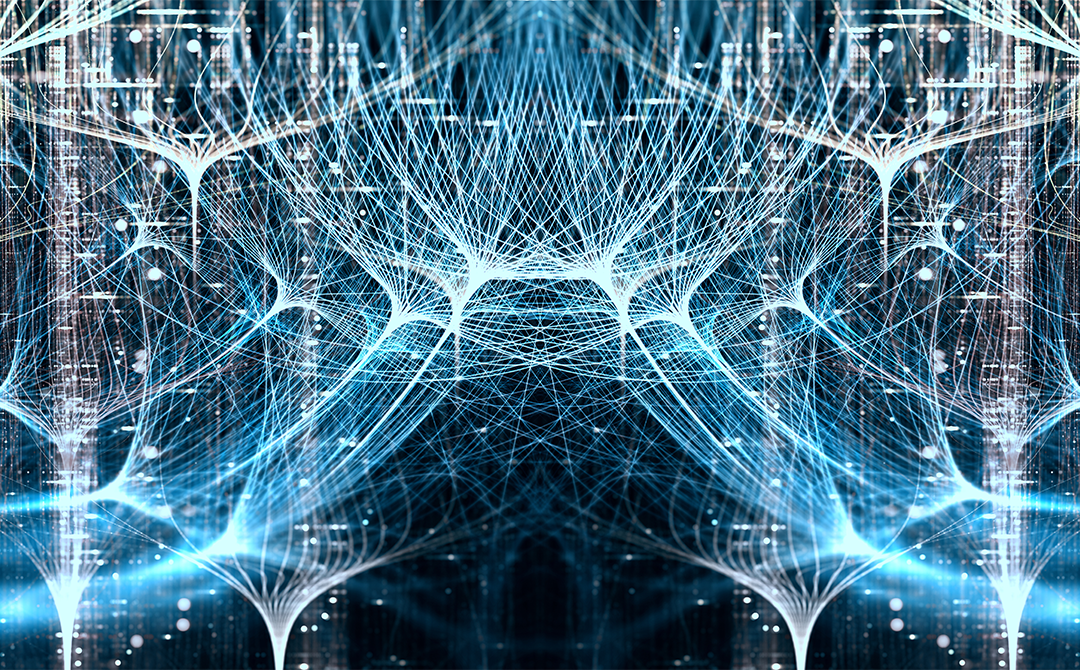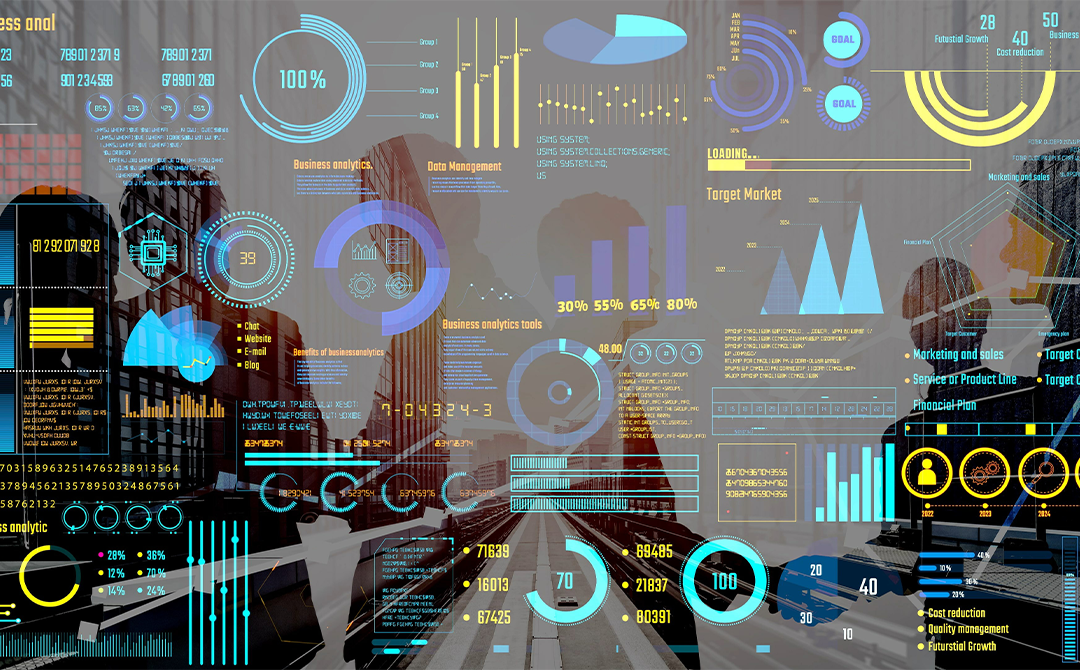
Are you someone who’s intrigued by how self-driving cars anticipate lane changes better than humans?
Then you’ll likely be happy to learn about everything else deep learning is capable of, aside from object detection. Enhanced medical diagnostics, accurate fraud detection in banking and other financial services, personalized recommendations when online shopping or OTT streaming - it is influencing businesses and improving customer experiences across industry sectors.
With the ability to recognize patterns, analyze unstructured data like images, and foresee outcomes, deep learning AI (DL-AI) has become the key force behind several tech innovations today. Dive deep into what it is, the core components, frameworks, real-world applications, and a reimagined future, in this blog.
What is Deep Learning? Why is it Shaping the Future of AI?
It is a technology that utilizes multi-layered structures to process and analyze information from big datasets to uncover and learn from complex patterns. These layered structures are artificial neural networks, drawing inspiration from our human brain’s extensive neural network and interconnected neuron system.
Underthe umbrella of artificial intelligence, machine learning is a subset that enables a system to learn and improve autonomously, and deep learning (DL) is a subset of machine learning with more nuanced, layered algorithms and approaches. Like, if machine learning models help predict weather changes based on historical data, DL goes a leap ahead and identifies patterns in atmospheric behavior like the formation of storms or temperature anomalies, in real time.
In the year 2024, the deep structured learning market was at US$96791.2M. This is projected to grow at a CAGR of 31.8% to US$526,721.1M between 2025 and 2030 (Source). This is no surprise with the increased adoption of DL in all walks of life, including healthcare, finance, legal, and customer service. It can help recognize cancer in MRI scans, make specific content recommendations based on user habits and preferences, act as a messenger or information provider through chatbots, and do so much more.
Clearly, DL is revolutionizing the world. But what enables this?
Core Components of Deep Learning Systems
Like any highly sophisticated technology, DL-AI is made up of some building blocks that enable it to drive state-of-the-art innovations. Here is a debrief on its core components:
Neural networks and layers
At the very core of this tech lie the neural networks. Inspired by the human brain, they comprise layers of computational nodes (neurons) that work on the data being fed and pass the results to the next layer.
Layers
Here are the three layers which artificial neurons are organized into in any deep structured learning system:
- Input layer, which receives raw data including images, text, audio, etc.
- Hidden layer, which gets the results from the input layer to extract features and learn how to represent them
- Output layer, which delivers the final outcome or prediction after processing information from the hidden layer.
What distinguishes machine deep learning from traditional ML is the depth of these layers, that is, the number of hidden layers.
Types of neural networks
Since a neural network can have any number of nodes and layers, with the nodes having the freedom to interact in any way, it’s impossible to draft a complete list of neural network types. It’s ever-growing. But based on the number of hidden layers a neural network has, we can broadly classify them into two categories:
- Shallow neural networks: Have only one hidden layer. They are fast with low processing power and cannot handle complex tasks.
- Deep neural networks: Have more than one hidden layer. They are slower, require much higher processing powers, but are adept at handling complexity.
Below is a non-exhaustive list of some common deep neural network architectures:
- Convolutional Neural Networks (CNNs): Also called ConvNets, this neural net is best for image and video processing. Though demanding from a computational sense, they offer a very scalable approach to computer vision tasks like object recognition and image classification.
- Recurrent Neural Networks (RNNs): Whenever we need to process sequential data, RNNs come into the scene. Their feedback loops give them the ability to store memory from past feeds. This helps with context retention, making them suitable for applications like text generation, speech recognition, and weather forecast based on past data, among others.
- Transformers: Also used to process sequential data, this architecture beats RNNs’ long-term dependency struggle with attention mechanisms and parallel processing. It works best for NLP applications involving long sequences - text summaries, answering questions, etc.
Activation Functions
Neural networks would be very limited in their ability to tackle complex tasks if not for activation functions. They are the ones that introduce non-linearity to a model, determine if a node should be activated or not, and influence the output for the next layer in the network. Popular functions include:
- Sigmoid: Great for binary classification and probability prediction. Inputs are mapped between 0 and 1.
- ReLU: Rectified Linear Unit is simple and efficient - it outputs zero or the unchanged input based on whether the input is negative or positive, respectively.
- Softmax: Opted for multi-class classifications. This function’s outputs are normalized into probability distributions.
- Tanh: Ranged between -1 and 1 (for input mapping), it’s preferred over sigmoids for the zero-centered outputs. Used in RNNs.
Loss Functions
Loss functions are crucial for enhancing AI deep learning performance. They render the difference between a model’s predicted outcomes and actual values to reduce the error percentage. They are largely classified as regression functions and classification functions, though there are other loss functions outside of these two categories.
The most popular of these are the Mean Squared Error (MSE) and Cross-Entropy (Log Loss). The former is a regression function that gives the mean squared difference between the predicted and actual values, while the latter measures the loss between predicted probabilities and true labels.
Optimizer Algorithms
As the name suggests, they are mathematical techniques prime for improving model accuracy and reducing loss by adjusting the model’s parameters. Momentum (for accelerate training in deep CNNs), Adam (for quick and efficient training), and AdamW (for large-scale models like GPT) are some of the optimization algorithms used in DL-AI.
Training vs. Inference
Feeding the model with data, calculating the losses, etc., is what we call training. Inference is when we utilize the model to draw new predictions on data that is new. The performance of AI-DL is highly dependent on the transition between the training and inference phases.
What is Deep Learning in Data Science?
According to IBM, more than 80% of enterprise data is unstructured (Source). This is the fuel for artificial intelligence vis-à-vis deep structured learning, which excels at processing this. And that’s what makes the latter indispensable in data science.
What’s data science? It’s the study of data to enable intelligent decision-making for businesses. By transforming and presenting unstructured data as valuable and deep insights, DL furthers the predictive power of organizations, empowering them to make informed and smart business moves.
How do you think X (formerly Twitter) is able to identify trending public opinions? What about medical imaging that precisely detects tumors or fractures? And voice assistants converting speech into voice commands seamlessly in real time? These are all real-world applications powered by deep learning in data science.
Deep Learning Frameworks: Building Blocks of AI Innovation
Where deep structured learning is today, we owe it all to the robust frameworks that support experimentation and deployment. By serving as scaffolding, they make it simple for engineers and researchers to create, evaluate, and scale models. Here are some of the most common frameworks:
- Excellent for production settings, TensorFlow (Google) supports GPUs and is highly scalable.
- PyTorch (Meta) is preferred in research and academia due to its user-friendliness and dynamic computation graphs.
- Fast prototyping is made possible by Keras, a high-level API built on top of TensorFlow.
- JAX is made for ML research with high performance.
MXNet and CNTK are less common but serve specific use cases.
These frameworks make it possible for:
- Modules of reusable code
- Acceleration of GPUs
- Architectures that are scalable
In 2024, PyTorch was used in more than 70% of AI research papers (Source), demonstrating its dominance in the field. It’s worth noting that even OpenAI's GPT models were constructed with PyTorch infrastructure. Without these tools, it would be extremely difficult to train and implement AI-DL models at scale.
Use Cases of Deep Structured Learning
We know that it impacts countless domains, but the following are the areas where its influence is the most profound:
Computer vision
Here, DL has removed the dependency on traditional ways of manually designing features, shifting the gears towards data-driven learning. Machines can now achieve high accuracy and adaptability, with computer vision CNNs enabling automatic extraction of features and hierarchical learning from unstructured data like images.
Applications:
- Image classification, where labels from an already defined category list are applied to images. This is applied in medical imaging like X-rays and MRIs, product categorization based on images in online retail stores, and enabling autonomous vehicles to identify and differentiate between road signs, walking pedestrians, and other obstructions.
- Facial recognition, where systems can learn and absorb an individual's facial features, to later verify their identity. This is widely used in smartphones for authenticating users and unlocking devices, on social platforms to suggest people tags based on previous uploads, and for security systems to verify identities before sharing access or control.
- Object detection identifies and also locates objects within images. We use this in healthcare to localize tumors and other medical abnormalities, manufacturing to detect faulty products or defects in them, and in surveillance systems to track and find suspicious movement and activity in real time.
- Image segmentation divides each image into several parts to differentiate and locate objects and boundaries. This is adopted in medical scans, lane assist, and other self-driving features in cars, and in augmented reality.
NLP and speech recognition
Several natural language processing tasks and applications have been enhanced by deep structured learning. From text classification to speech recognition, DL networks and language models have improved a machine’s understanding of the human language and its nuances. Feature learning is one of the main aspects to note, as it removes the burden off of domain experts to manually design features by enabling accurate extraction.
Whether it is analyzing customer sentiments in product reviews and feedback or translating the dialect/language from a recorded customer call, all NLP applications are constantly improving and evolving to better understand human beings.
Gen AI
Chat GPT. Midjourney. Grammarly. These are all generative AI applications enhancing user experiences by automating tasks, creating assets like images, text, music, code, etc., and enhancing user journeys. These DL based AI models pick up on raw, unstructured data fed into them and generate realistic, probable results when prompted.
Customer care adopting chatbots, software developers generating code, OTT platforms providing personalized recommendations are all examples of deep learning based generative AI applications.
Reinforcement learning
While deep learning dissects and absorbs complex data patterns using neural networks, reinforcement learning prioritizes environmental interaction to learn. Together, deep reinforcement learning (DRL) harps on DL’s artificial networking to enhance how systems treat complex data and engage in dynamic environments. To put it simply, DRL leverages the best of both worlds.
Deep Learning for Data Science: Real Business Applications
As of a 2024 McKinsey report, 72% of companies worldwide now use AI in at least one business function (Source). Clearly, artificial intelligence and, thus, DL are making waves across sectors and industries, revolutionizing how businesses deliver tangible results and scalable growth.
Customer Service
Chatbots and AI calling agents are no more about scripted responses. Enabled by DL and NLU, they are not adept at deciphering the intent and sentiment in real time.
Erica, Bank of America’s virtual assistant, has handled a billion customer interactions and resolved several issues - from lost cards to payment reminders (Source). Another worthy example to note is Google’s Contact Center AI. With its high call volume managing capacity, it continuously and consistently keeps learning to accurately support calling customers and deliver human-like service. Source
Healthcare
This is a promising industry with immense scope for deep learning AI applications. From medical imaging to diagnostic assistance, DL has paved a new, improved path for enhanced healthcare. Recently, DeepMind’s AI outperformed radiologists in breast cancer detection, decreasing the frequency of encountering false positives and negatives. Source
Diabetic retinopathy has been in the spotlight for being one of the leading causes of vision loss across the globe. But early detection is a major game changer, and recent research has shown how an FDA-approved AI system called IDx-DR makes this possible while ensuring strong diagnostic performance. Source
Finance
Ever wondered how your bank identifies a fraudulent transaction made using your name and account details, even without you monitoring your debits? It’s because of deep learning specialization that analyzes your behavioral patterns to know when something’s amiss with regards to the transaction location, amount, or the interval between frequency of withdrawals.
Financial institutions adopt deep learning AI for risk scoring and credit prediction models as well. Upstart is an example, using AI that enables accurate credit decisioning for digital money lending. Source
Legal
Known for the long work hours and high-stress environments, DL is a blessing in disguise for legal professionals, for it automates contract generation and legal research, making the otherwise cumbersome processes and routine tasks faster and efficient.
Like LawGeex and SuperLegal, some tools use deep structured learning based gen AI to perform tasks like reviewing contracts and flagging risks, issues in compliance, and missing clauses quicker than lawyers themselves, by automating them (Source). Other DL-enabled litigation support platforms refer to older cases by combing through vast databases and relevant laws for case preparation.
Retail
Amazon’s ‘People Also Buy’ and Netflix’s ‘People Like You Also Watched’ are examples of personalized product and content recommendations created for retailers by deep learning models. These models predict such probable results based on their thorough study of each consumer’s purchasing and content consumption behaviors.
DL’s applications in the retail space also extend to dynamic pricing and inventory management. Take, for instance, the fashion brand Zara or the US multinational hypermarket, Walmart. The former forecasts the demands to adjust its product pricing and restocking, while the latter’s use of computer vision improves sales and supply chain responsiveness by tracking foot traffic at the aisles of a store and automating product refills by anticipating out-of-stock scenarios, among others. Source 1, Source 2
Manufacturing
Equipment failures can cost manufacturers a whole lot. But predictive and prescriptive maintenance, another one of the examples of deep learning, forecasts such failures by processing sensor data. DL also plays a role in quality control, ensuring that factories are functioning per the standards, without missing any process errors or microscopic production defects, which can be easily missed under human supervision.
GE’s power generation software, called Vernova, optimizes maintenance work by regularly monitoring turbines and jet engines and scheduling timely checks. This ensures higher efficiency in the manufacturing processes and better productivity with lower operational costs. Source
Future of Deep Learning: From Models to Multimodal Intelligence
This rapidly evolving technology is taking a trajectory towards context awareness, multimodality, and ethicality. High accuracy is no more the end goal; ot’s one of the goals, with the focus also shifting towards achieving real-time, intelligent decision-making, reduced dependency on data, and trustworthiness with improved transparency.
Multimodal AI
This refers to systems that can process and understand different types of input, such as text, images, audio, and video, simultaneously, to create more complete responses. GPT-4o and Google Gemini are at the forefront. They can engage in conversation while interpreting images or understanding tone from voice input.
Picture an AI assistant that can analyze a complex chart and immediately answer a voice question about sales trends, combining vision and language right away. This creates new opportunities in education, healthcare diagnostics, and engaging customer experiences.
Self-supervised Learning
Traditional deep learning has relied heavily on large, labeled datasets that are costly and time-consuming to create. Self-supervised learning changes this approach by training models on raw, unlabeled data. It does so by finding patterns or predicting missing parts of the data.
Facebook’s SEER model and Google’s SimCLR are leading in this area, learning from billions of online images without manual tagging. As this method develops, it could unlock AI capabilities in specialized fields where labeled data is limited, such as rare disease research and industrial inspection.
Edge AI
DL models are now able to operate directly on local devices (smartphones, drones, and IoT sensors), without needing constant cloud connectivity, all thanks to Edge AI. This supports on-the-spot decision-making, addresses privacy concerns, and reduces latency.
Consider smart homes that adjust to your habits or retail mirrors that suggest outfits based on your preferences. Apple’s on-device Siri processing and Tesla’s real-time object detection are clear examples of how edge deep learning is already changing consumer experiences.
Explainability and Ethics
With the growing power of deep structured learning models, the importance and necessity of ensuring transparency and fairness is increasing. There is an emerging demand for AI models that can be explained, audited, and are free of bias.
Regulatory frameworks like the EU AI Act highlight this change. Tools like LIME and SHAP are being used to ensure that model decisions are clear, allowing developers and users to trust how outcomes, such as loan approvals or medical diagnoses, are made (Source). The future of deep learning is as much about accountability as it is about intelligence.
Deep Learning is Here to Stay
With chatbots LLMs like ChatGPT becoming work companions and curated playlists becoming a part of our everyday routines, it is needless to say that deep learning is changing not just how machines function, but how people live too. Its ability to work with big data, process it, recognize and learn patterns, and thus drive intelligent systems, establishes DL as the foundation of next-gen tech.
At Tredence, we act as facilitators of business success by enabling organizations to combat complex challenges and drive digital transformation by leveraging AI deep learning. Curious to know how we can contribute to your growth? Connect with our AI consulting experts to build your future one layer at a time.
FAQs
-
Deep learning in data science - how is it used?
DL greatly improves what data science can do. It automates complex tasks like image recognition, text analysis, and anomaly detection, and is especially helpful in handling unstructured data, such as customer reviews, social media posts, or medical images, where traditional models are lacking.
Structures like CNNs and RNNs in deep learning aid in predictive modeling, sentiment analysis, forecasting, and more. DL’s capability to create self-improving systems, enable speedy decision-making, and lessen the need for manual feature engineering is highly empowering for business organizations.
-
What’s the difference between deep learning, machine learning, and AI?
Artificial Intelligence refers to the idea of machines doing tasks that usually need human intelligence. ML is a part of AI that focuses on algorithms that learn from data. DL is an even narrower part of ML, using multi-layered neural networks to handle complex, unstructured data.
While ML techniques often need manual feature selection and structured data, deep learning is better at automatically finding patterns in speech, images, and natural language. This ability enables applications such as facial recognition, autonomous systems, and language translation.
-
Why is deep learning important in today’s AI landscape?
From recommendation engines, to voice assistants, fraud detection, generative AI, and other top AI systems of the day, deep learning is the. Its strength comes from its ability to keep learning from large datasets, improve performance over time, and manage complex tasks with minimal human input.
In business, deep learning drives intelligent automation, real-time decision-making, and highly personalized customer experiences. As AI adoption grows across various industries, DL offers the computational power needed to tackle problems that traditional algorithms struggle to solve effectively.
-
Can deep learning models make mistakes?
While they are powerful, they can still make errors. Problems like overfitting, biased training data, and lack of contextual understanding can result in wrong predictions or unintended issues. That’s why explainability, model governance, and ethical AI design are crucial. A solid MLOps foundation is vital for minimizing risks while maximizing model dependability.
-
What is AI deep learning performance?
AI deep learning performance measures how well a model can recognize patterns and generalize to new data. It is assessed with metrics such as accuracy, precision, recall, latency, and model robustness. However, performance includes more than just speed or accuracy; it also involves scalability, cost-effectiveness, and business relevance.
At Tredence, we enhance model performance throughout the AI lifecycle using accelerators, modular architectures, and domain-specific feature engineering, ensuring deep learning models not only perform well but also deliver measurable business results across various sectors.

AUTHOR - FOLLOW
Editorial Team
Tredence




